How to Remove Embroidery from Shirt, Jacket, and Hat?
by William Sanders
Embroidery is a fun element to add or have in any piece of clothing. Starting from hats, shirts, and jackets to pants, embroidery can add a pleasant little touch to all of them.
However, as great as having embroidery in our clothing piece can be, it can be daunting to make a mistake during the process or not liking the end product. At the same time, you may find an item that you absolutely love, but the embroidery that comes with it may be a deal-breaker.
Luckily for us, there are ways to remove embroidery all by ourselves!
Contents

And here, in this article, I will teach you how to remove embroidery from a shirt, jacket, and hat.
How to Remove Embroidery from Shirt, Jacket, and Hat
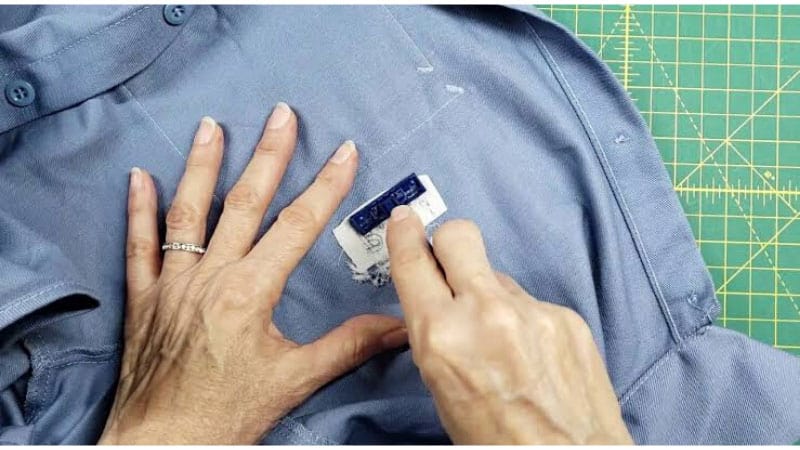
Removing embroidery on your own can be a little tricky; you have to stay extra cautious during the process to avoid damaging the article of clothing. But with the right methods and tools, you should be able to successfully pull it off!
If you’re working with hand embroidery, you have to be very meticulous while handling the work as the stitches are extremely fragile.
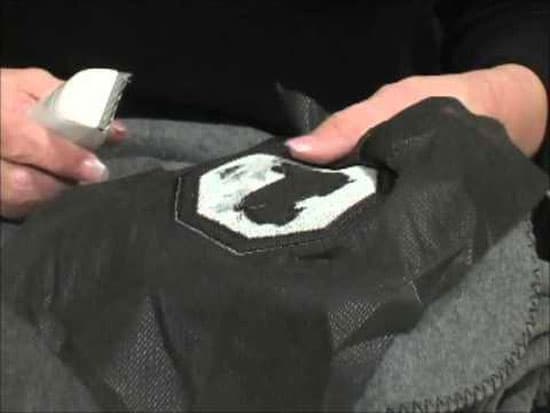
Removing machine embroidery, on the other hand, isn’t as tedious; nevertheless, these embroideries have more layers of stitches; hence, there are more to remove. As a result, it requires more time. There are two different techniques of removing embroideries, let’s get an idea of how each method works:
Using a Seam Ripper
Seam rippers can be used to get rid of both handstitched embroideries and machine embroidery.
This method isn’t as easy or smooth as using an electric embroidery eraser, but it is equally as effective. Seam ripper is especially recommended to use when working with handstitched embroidery as it’s more on the fragile side. Let’s have a look at how to use a seam ripper to remove the two types of embroideries.
Removing Hand Embroidery
To remove hand embroidery using a seam ripper, you’ll also need a pair of tweezers, a magnifying glass, a lint brush, and/or duct tape. And to begin, the process, flip the garment inside out, so the back of the embroidered portion is entirely exposed.
Then, slip your hand inside so that you can have the part you want to remove rest in your palm. This will give you balance and a good view of the progression of the work; in this process, the better visuals you have, the better the outcome is likely to be.
Next, take the seam ripper and gently slide it under a small fragment of stitches. Give a gentle push to the seam ripper in forwarding motion so you can start to cut the stitches. If you want good control over the process, we will suggest that you take 5-6 stitches at a time.
Moreover, to avoid ripping or damaging the garment, ensure that you work slowly and gently. After you have cut all the stitches, turn the item right-side-out to check and pull out any threads that may have come loose. Following that, take the pair of tweezers and start pulling off the stitches.
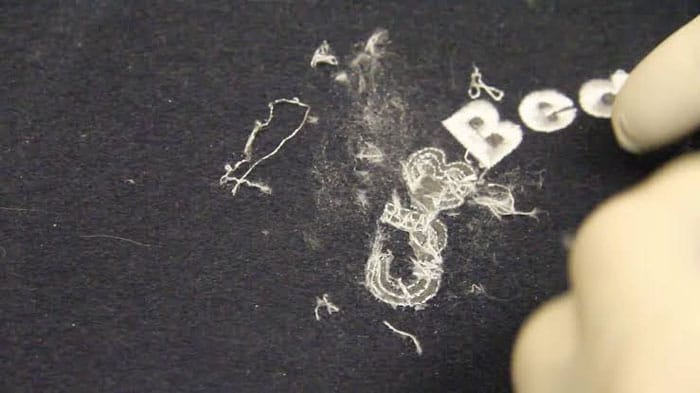
If you feel any resistance, stop pulling immediately as it can damage the fabric and use the seam ripper to cut it off. While pulling out the stitches, work in small sections and use a magnifying glass if you are having trouble seeing which threads are torn and need to be pulled out.
Using a magnifying glass is especially essential while working on small detailed sections.
After you have successfully removed all the stitches, run a lint brush over the area you worked on so you can catch all the pesky stray threads. If you don’t have a lint brush, you can substitute it with a duct tape to catch all the threads. And that’s all it takes to successfully remove hand embroidery stitches!
Removing Machine Embroidery
Removing machine embroidery is very similar to removing handstitched embroidery, but it’s a wee bit complex. You will need similar tools and will have to carry out a similar process with little changes here and there.
Start the process the same way you would if you were taking out handstitched embroidery. Turn the clothing item inside out, slide your hand inside, and have the embroidered part rest in your palm.
Next, search for a white bobbin thread, it may be a little tricky as the stitches are much smaller than the stitches of handstitched embroidery. Once you spot it, insert the seam ripper in the same manner as before, but this time you will go under 30-40 stitches at once.
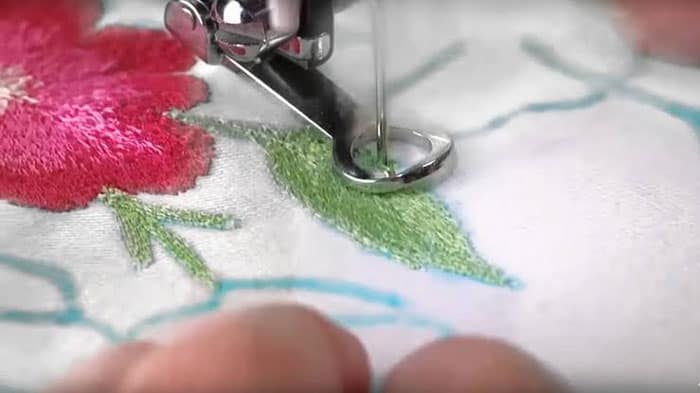
In between the stitches, you will come across a stabilizer thread, cut the stitches around it carefully to expose it, but make sure that you do not damage the stabilizer. The purpose of a stabilizer is to protect your piece of clothing from any damages and give the embroidered part support.
Moving onto the next step, turn the item right-side out and begin the tweezing process. If your clothing item has any extra logo image or graphics attached to the embroidery, pull that out first and then proceed to get the threads plucked carefully.
If you feel any resistance, stop immediately and use your seam ripper again to cut the threads if needed. Repeat all the steps until you have all the stitches out. Finally, use a lint brush or a duct tape to clean out all the stray threads, and your job will be done!
Using an Embroidery Eraser
Embroidery eraser has made the process of getting rid of embroidery super easy and simple! It is fast and extremely efficient. However, it is not the ideal tool for removing handstitched embroidery, and we will recommend you to use it only for professional-quality or machine embroidery.
Removing Machine Embroidery
The process of removing embroidery using an eraser is very similar to using a seam ripper. You have to start by turning the garment inside out, then slide in your hand inside the garment and place it underneath the embroidery. Stability is very important while working with the eraser to avoid tears.
Once you have the embroidery resting in your palm, get rid of all the stabilizers, if there are any. Next, place the eraser at the edge of the embroidery and lightly drive the eraser forward. Move forward slowly, going in about an inch or 2.5 cm each time.
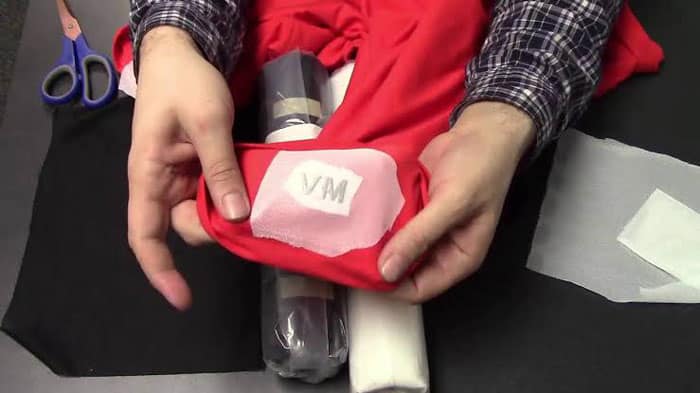
Continue working across the embroidery until you have shaved off the embroidery work completely. Make sure you lift up the eraser every time you are moving on to the next segment.
After you have completed the process of shaving off the embroidery work, return to the front side of the garment, and you should be able to lift off the stitches with your hands! If you face any troubles, you can use a needle or seam ripper to lift the threads up and remove them.
If everything does not come out on the first try, turn the garment inside out again and run the eraser past the remaining stitches. Finally, use a lint roller or dust tape to remove all the stray threads.
How to Get Rid of the Stitch Marks
It doesn’t matter what method of removal you use if you end up with stitch marks or holes. Fortunately, it is possible to get rid of them by following a few steps!
Set your ironing machine in the appropriate heat setting; for cotton or linen, use a hot setting, and for silk and synthetics, use a cool or warm setting. After you have set the iron according to your preference, run the iron over the front side of the fabric.
Then, place the garment on top of a hard surface such as your table and find the holes produced by the removal of the stitches. Rub those spots back and forth horizontally using your fingernails or the tip of a spoon for 2-3 times, but be gentle on the fabric, especially if you’re working with silk as it may result in tears. Repeat the same process, but this time vertically, to tighten the horizontal threads.
The holes should go away after following the process. However, if the holes don’t disappear after the first try, repeat the process again, and if needed, turn the garment inside out and repeat the process there. A neat trick is to use steam during this process, as it will help significantly!
Wrap up
All the above-mentioned processes can be used on shirts, jackets, and hats. The two factors that will determine what steps you should take are the type of embroidery – hand embroidery or machine embroidery and the fabric of the garment.
Removing embroidery is often looked at as a very difficult job to pull off, but we hope that by now, you know how simple and easy it really is.
Always remember to wash your hands before starting the work to avoid staining the fabric, especially when you’re working on fading the stitch marks and do not use tape to remove the threads from fabrics such as terry cloth or velvet.
Make sure you have all the needed tools before starting the project. With a little patience and hard work, you should be able to do it like a pro after a few tries!
 |
 |
 |
 |
 |
 |
 |
 |

About William Sanders
William Sanders was born and raised in California. After receiving his Master’s degree in information science from San Diego State University, he started working as a city councilor. In his spare time, William enjoys playing best-selling MMORPG games such as World of Warcraft and Fnal Fantasy, where he often takes on the role of guild leader with hundreds of players collaborating for success under his leadership. William is also a regular contributor to some popular magazines such as San Jose Mercury News, Gleanster Research, and Palmgear.
Leave a Reply
You can get FREE Gifts. Or latest Free phones here.
Disable Ad block to reveal all the info. Once done, hit a button below
 |
 |
 |
 |